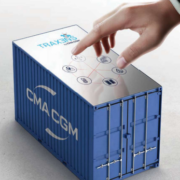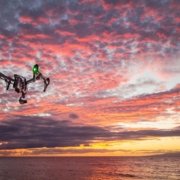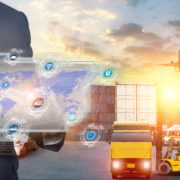Blue Innovation – The box is now a “Smart Box”
The world of transport is no stranger to the continuous advances in tracking technologies. Since the invention of the global positioning systems and their implementation in the transport sector in the ‘90s, the need to monitor the placement of individual containers during a shipment has become more common. This was advantageous both to the clients sending the units as well as the shipping lines managing the processes. All parties involved could essentially reap the benefits of tracking shipments during deep and short sea shipping crossings.
In today’s climate, simply tracking the “global position” of the container isn’t enough. It now involves the incorporation of alternative functions designed to benefit the customers. The (now) outdated security seal of the containers has morphed from simply being an evidentiary device aimed to deter theft into an in-situ electronic system that detects vandalism activities. Moreover, just like mobile phones, the E-seal has outgrown its original goal. It has diversified so much that it can be considered appealing for its added value functionalities just as much as for its original purpose.
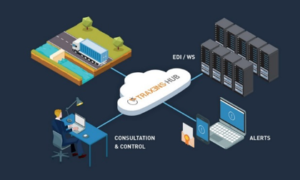
Some of these added extras include the internal and external control of temperature; a warning notification preceding an attempt to compromise the equipment; humidity control and monitoring inside the unit; status updates and warnings during intermodal transfers or at physical access points; systems of impact detections on the unit; constant real-time monitoring and easy access through the internet or a mobile device; possibility to customize notifications in case of speeding or access points checks; history of the unit route; the possibility to open doors at defined access points; as well as enabling the opening of the unit when pre-set date and location parameters are met. All these added value functionalities have transformed the traditional container into a more intelligent, accessible and traceable unit that makes integrating data for the best logistic control of those involved in the movement of the merchandise possible.
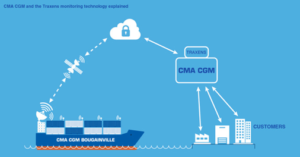
In 2016 the TRAXENS company in charge of creating hi-tech devices for real-time monitoring has joined forces with CMA CGM to develop a device that complies with many of the aforementioned functions in order to generate Big Data for the different stages of the intermodal transport operations and to improve services for their customers. The device can provide updates on the location, temperature, humidity levels, vibrations, impacts, attempted theft, customs clearance status among others with the additional ability to remotely control functions.
Recently the MSC shipping company has joined the TRAXENS – CMA CGM alliance and has already begun the incorporation of 50,000 “Smart containers” in its operations to offer better visibility, control and monitoring of data for its customers. Moreover, since 2016, Maersk in conjunction with a US-based startup SensorTransport has worked on the development of a Remote Container Management System which offers similar services.
The way transport operations are carried out is constantly evolving, and with the help of the technological inventions, it shows no sign of slowing down. The Smart Containers are proof of that. They not only create significant added value to the customers, but they have (and will continue to do so) greatly contributed to the future of transport, logistics and blockchain through the contribution of Big Data. It will surely be fascinating to see what other solutions transport companies come up with in the coming decades to further modernise and perfect the intermodal supply chain.
For more information you can go to:
- https://www.cma-cgm.com/services/smart-containers
- http://www.traxens.com/en/
- https://container-mag.com/2018/10/16/msc-partners-traxens-provide-smart-container-solutions/
Written by:
- Vanessa Bexiga, Operations Manager (Escola Europea – Intermodal Transport)

